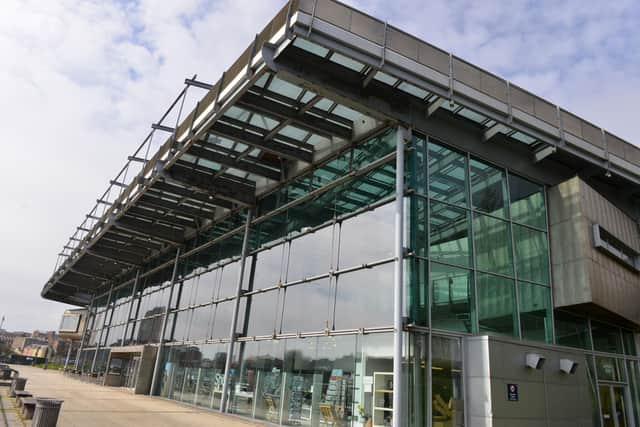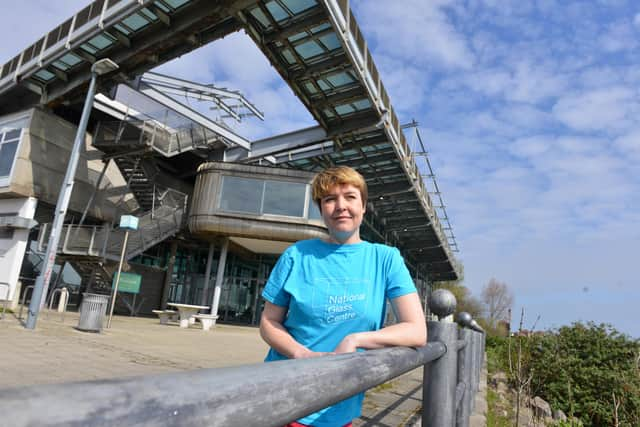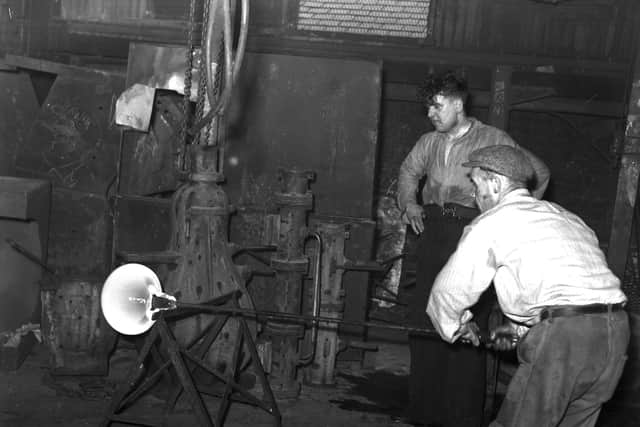'Sunderland's oldest cultural link with the Wear' - dismay over further blow to glassmaking in city
and live on Freeview channel 276
The news this week that University of Sunderland is to close its glass and ceramics courses comes as yet another shattering hit to hundreds of years of glassmaking on Wearside.


Releasing a statement on its website, the university, said it had been exploring relocating the programme from the National Glass Centre (NGC), which the university owns, to Priestman Building on City Campus, as part of its work to find alternative locations for activity based in the current NGC building - which will itself be closing in 2026.
Advertisement
Hide AdAdvertisement
Hide AdThe statement says that the university since concluded that it wasn't financially viable to continue the course, which will close in 2026, saying: "We commissioned an external project team to produce a feasibility report to assess the scope and viability of relocating, and to provide a high-level cost estimate.
"The report concluded that moving equipment and undertaking the necessary changes to the building – for example, ventilation and extraction facilities – would cost in the region of £9.4 million."
Many readers took to social media to express their dismay over the loss of the course, which has attracted glass artists from around the world over the years.
Diana Mahon said: "Absolute madness! The city's oldest cultural link with the Wear. An art form and a heritage skill….what a shame. Yet we can look forward to ‘ Culture House’ opening in the city centre. The irony is not lost on me."
Advertisement
Hide AdAdvertisement
Hide AdPhilip Wardle said: "Very very angry about this for so many reasons. We need such an important part of our creative heritage to be preserved."
David John Gardner said: "We have a long history of glass making both locally and nationally and need to support this ancient craft."
Liz Cairns said: "My son is an award winning glass artist who did his degree here. People came from all over the world for the degree course. Such a shame to see this come to an end."
Repair costs have also led to the impending closure of the National Glass Centre after an external report "identified long-term structural defects, including roof leaks, corrosion and broken glazing" with an estimated repair cost quoted as being £45m.
Advertisement
Hide AdAdvertisement
Hide AdCampaigners from the #SavetheNationalGlassCentre group, many of whom are alumni of University of Sunderland, continue to fight for more answers over the closure, why there wasn't a more robust maintenance programme and the estimated repair costs, with 32,000 signatures on Change.Org supporting their cause, with hopes to reach 100,000 so it can be presented to Parliament.


Jo Howell from the campaign said: "This year is 1350 years of glass making on Wearside. There are no celebrations. Only commiserations to be shared as all of our fantastic super skilled artisans that now face the end of their careers in the city that they love.
"The campaign believes that the National Glass Centre et al should be saved as a matter of great national urgency. These skilled and unique workers will not stick around to watch the sorrowful demise. They will leave. If they leave before we can wrangle the building out of the hands of the university then all is lost.
"The response from across the UK has been one of anger, sadness and incredulity. We hope to turn all of that support in to collateral to bring the university back to the table with the community."
Advertisement
Hide AdAdvertisement
Hide AdIt’s just 26 years since the £17million National Glass Centre was opened by King Charles III, when he was Prince of Wales, on the banks of the Wear, honouring centuries of glass-making tradition on Wearside whilst also keeping the art form alive for future generations.
Over the years it’s become a landmark building housing exhibitions, daily glassmaking demonstrations from skilled artists, a shop, cafe, workshops and so much more, whilst also being an important teaching facility for the university’s glass and ceramics academic programmes.
University of Sunderland bought the National Glass Centre in 2010.
Reflecting on the history of glassmaking in Sunderland


A stone's throw from National Glass Centre lie St Peter’s Church, where French glaziers created Britain’s first stained glass in AD674 after Benedict Biscop brought them over to craft windows for the Monkwearmouth monastery.
Advertisement
Hide AdAdvertisement
Hide AdThe French craftsmen who visited Sunderland in the 7th century passed on the skill to locals, making Sunderland one of the earliest centres of glassmaking in the country, and by the 19th century it was a booming industry.
Along with shipbuilding and coal mining, glassmaking played a huge role in the city’s industrial heritage and was fuelled by the availability of cheap coal and high-quality imported sand, the two key raw materials needed for large-scale glass production.
Some of the biggest factories included Turnbull's Cornhill Flint Glassworks at Southwick, open from 1865 to 1953, which operated for decades, as well as Wear Flint Glass Works, known from 1921 as James A. Jobling and Co Ltd.
The latter made the iconic Pyrex brand which, thanks to its heat-resistant properties, became a staple item in kitchens across the world after being sold in its millions. Every single piece of Pyrex back then, many of which is now a collector’s item, was made right here in Sunderland.
Comment Guidelines
National World encourages reader discussion on our stories. User feedback, insights and back-and-forth exchanges add a rich layer of context to reporting. Please review our Community Guidelines before commenting.